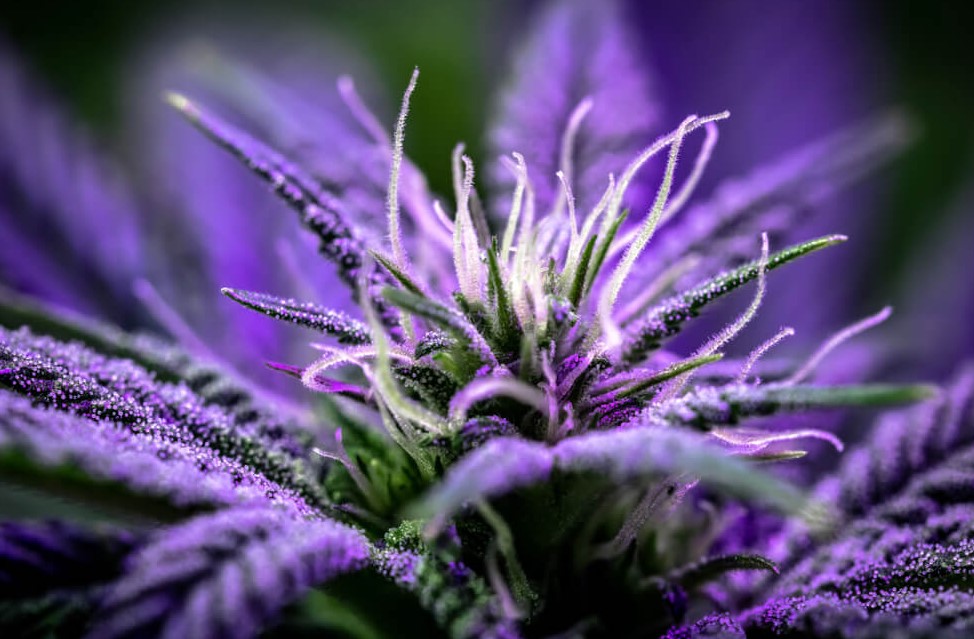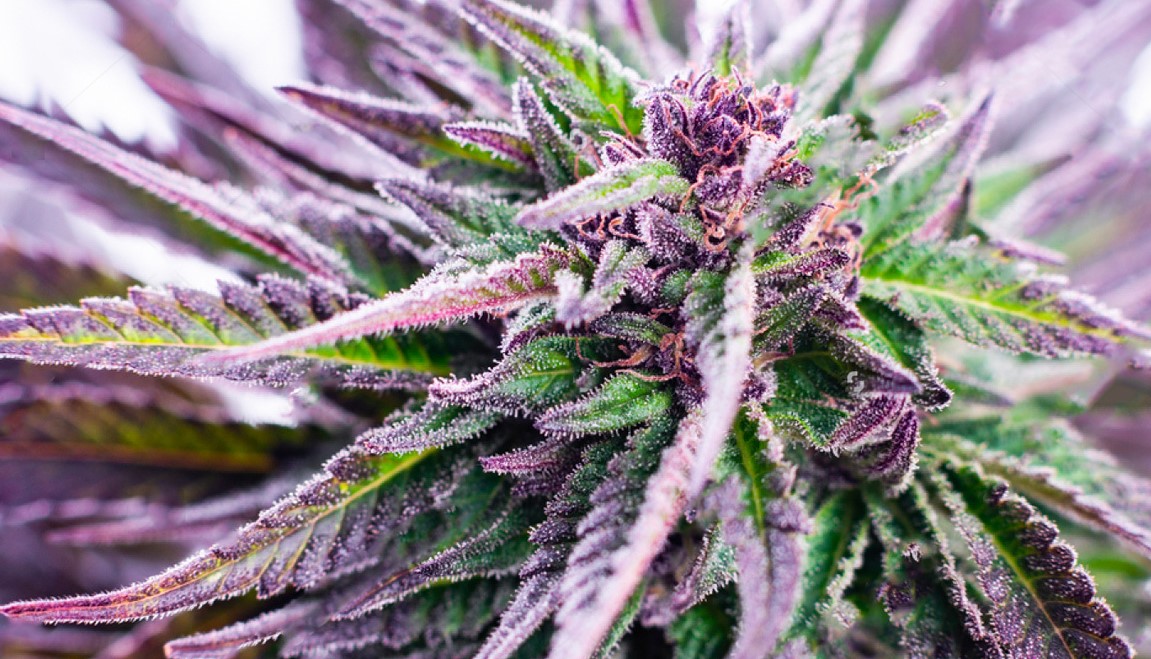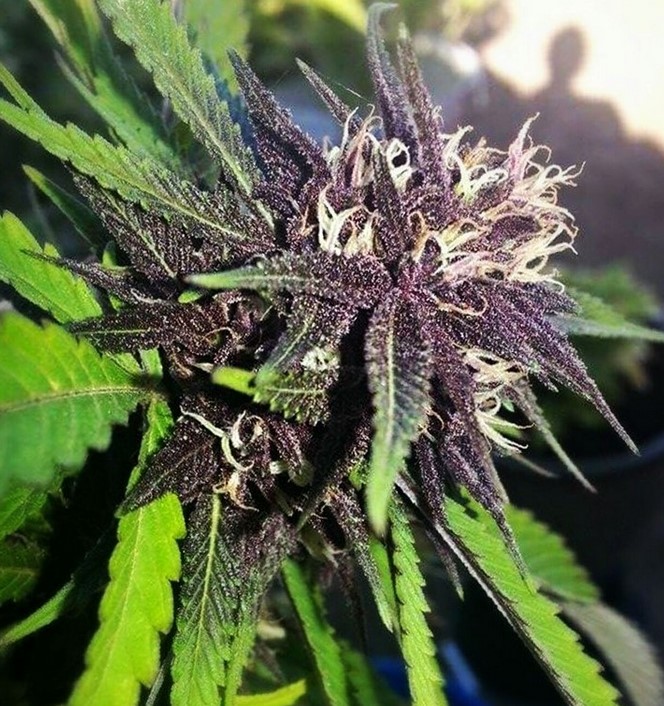Non classé
How to Grow Rainbow Colorful Cannabis
You might not know this, but cannabis comes in different colors besides green. The next time someone tells you that all marijuana is green, feel free to educate them using the extensive hue range of cannabis below!
For example, Rainbow Kush is as brightly-colored as its name suggests. While strains like Black Beauty, Panama-Sedena Red, and Pink Cake also have their aesthetic appeal However, you can’t take any souche and automatically turn it into a vibrant explosion of color. The tendency to produce various colors is primarily genetic-based. Though if you purchase the seeds of a colorful strain, there are ways that you bring out its most striking colors.
EDITOR’S CHOICE – Homegrown CannabisCo
If you’re looking for a reputable company that offers quality cannabis seeds, Homegrown CannabisCo is the way to go. With an extensive variety of feminized seeds, as well as growing information resources, this company will set you up for success every step of your journey.
Colorful Cannabis
It’s important to remember that your plant has four different parts that can create stunning colors.
Calyxes
As you may be aware, calyxes form the buds. The buds you see are actually a bunch of calyxes stacked on top of each other. Some or all of them can be a different color than green. In fact, it is usually the calyxes that give your buds most of their color.
A few purple calyxes is all it takes to provide a tint of color, for example. When you grind up the herbe, you will see colorful pieces throughout the sample. The more calyxes present, the more vibrant the bud’s color will be.
Pistils
As the pistils, or hairs, of the buds dry, they often turn orange, red, purple, or pink; even if the buds and leaves stay green. Once dried, some ofthe color from the pistils will be retained by the bud,,and you may also see hints of pigment peek through from beneath the surface.
Leaves
In certain strains, the buds stay green while the leaves grow yellow. The final product is a stunning plant, but because leaves are routinely trimmed after harvesting, you won’t see much of the color on the buds. It’s conceivable that your buds will remain black while the leaves turn purple, as an example. Low nighttime temperatures can cause this effect. The leaves that are exposed to light become purple while those in the shade do not change color.
Trichomes
The ‘trichome’ technique is often used by seasoned growers to determine when a crop is ready for harvest. They use a magnifying glass to tell if the plant isn’t ripe because clear trichomes indicate it isn’t ready. The plant’s THC concentration will be at its highest and best for harvesting if the trichomes are milky white. If the color becomes amber or yellow, you must harvest right away, and the cannabis will provide a relaxing high.
The pistil method is ideal for determining when to harvest in instances where trichomes have turned pink or purple.

The Genetic Imperative
The strain’s genetics are the most critical component of colorful cannabis. Whatever you do, no matter how hard you try, if a strain isn’t genetically predisposed to create vibrant hues, your efforts will be in vain. Anthocyanins are chemical building blocks within the anthocyanin family that produce red, purple, or blue pigments. They may also be found in plants such as red cabbage and violets.
For the record, there are over 400 different anthocyanins! As we’ll see later on, the pH at which these molecules are exposed has a big impact on the colors produced. Fortunately, anthocyanins do not change the flavor or aroma of cannabis; they only alter its color. Chlorophyll is responsible for plants’ green color. Anthocyanins begin to appear in a variety of hues as plant maturity approaches.
Some cannabis strains, on the other hand, are naturally endowed with more anthocyanins than others. This is why certain strains repeat the same hues over and over. Granddaddy Purple, for example, always produces vivid purples and darks.
If you want your marijuana buds to be colorful, pick a strain with colored pistils and buds. Ideally, the leaves and trichomes would also boast some color. However, if you’re looking for maximum color saturation after drying and curing, go for deep purple buds—these tend to retain their hue post-processes.
Five Important Factors You Can Control to Bring Out the Best Colors
Stunning colors can be produced by strains with the right genetics under specific conditions. For instance, marijuana produces anthocyanin and flavonoids for protection against UV radiation, pathogen resistance, and pigment production according to a study published in Applied Biochemistry and Biotechnology in 2014 by Mansouri and Bagheri.
Temperature
When the nighttime temperature is a few degrees cooler than the daytime temperature, certain marijuana varieties only reveal their full colors when it’s dark; especially as harvest time nears. Not every strain thrives in colder night temperatures, but strains like Panama will turn vivid regardless of the weather.
There are also strains like Querkle that prefer it to be warm at night. To cover all contingencies, consider growing your cannabis at a temperature of 75-80 degrees Fahrenheit during the day and 65-70 degrees Fahrenheit at night. Marijuana with red, blue, or purple hues is typically resilient to minor dips in temperature. Keep an eye on the temperature and don’t let it fall too far; your plants may experience shock if they do.
Growth Stage
The photoperiod has an impact on a plant’s coloration. You may notice a difference in leaf color by decreasing the amount of time your crop is exposed to light. This process gets more intense as the blooming stage nears its end, resulting in a drop in chlorophyll production. All of a plant’s resources are devoted to ripening flowers at this time, causing leaves to die.
pH
One of the most visible differences between marijuana strains is the color of their leaves. pH is one of the most essential adjustments you can make to bring out a marijuana strain’s color, according to experts. Soil should have a pH of between 6.0 and 7.0, while hydroponically grown cannabis thrives in a range of 5.5 to 6.5 as a general rule.
If you want red and pink hues, keep the pH around 3.5 or below to create them. If you want purple tones, avoid having the pH shift too significantly in one direction because that can lead to a clash of colorations. Colors tend to fade when they are exposed to high pH levels for an extended period of time (over 24 hours).
Lighting
While the effect of light levels varies depending on the strain, weed from the “purple” camp prefers strong direct light on the leaves and buds. It is thought that manipulating the light spectrum in LEDs may assist your plant’s anthocyanin synthesis rate.
The molecules act as a sort of “sunscreen” for the plant, so if you expose it to more light or create other stressors, the plant will produce more anthocyanin in order to protect itself. More experienced growers know how to stressing their plants just enough that they get a tan, but too much could ruin an entire crop.
Deficiencies
Although this is a riskier option, nitrogen deficiency can result in decreased chlorophyll, making the leaves appear yellow. A phosphorus deficiency might cause darker green leaves with tints of purple or red near the buds. However, we do not recommend taking this route as it could be detrimental to your plants if you’re not careful.
Sunny and Bright Yellows and Oranges:
Ideal Strains
Cannabis strains include Cannatonic, White Rhino, Blueberry, Power Plant, Headband OG and Wazzup.
Best Growing Conditions
Carotenoids are pigments responsible for the rich and vibrant yellows and oranges (and reds) seen in plants. In reality, humans rely on carotenoids as well because they help to make Vitamin A, which is required for better growth and vision.
All green plants make these carotenoids, but they are normally hidden by chlorophyll. Only when a plant is older and stops making chlorophyll will the colors of the carotenoids be visible.
How to Achieve These Conditions
You should concentrate on improving the pH of your plants as they approach the final weeks of blooming. Soil quality is crucial. Add organic soil amendments such as worm castings to your compost, but test its pH first.
Vibrant and Fun Red and Pink Hues:
Ideal Strains
Pink Lemonade, Pink Lady Kush, Pink Flower Shaman, Pink Lady Kush, Purple Princess and Alaska Thunder Bolt are just a few of the strains in this range.
Best Growing Conditions
Finding strains with red or pink buds can be a challenge, but there are several varieties with red or pink leaves or hairs. The reddish hues are caused by specific phenotypes that make the strain more likely to produce the color red during the flowering stage.
How to Achieve These Conditions
If you want your plants to flower, reduce the temperature and the amount of light they receive. You can also cut down on phosphorus a few weeks before harvest, but make sure not to do it too soon as it’s an important nutrient for them.
Exotic and Cerebral Black Shades:
Ideal Strains
Those with genetic lineages from Vietnamese Black, Tuna, Willy, Mamba, Diesel, and Widow landraces.
Best Growing Conditions
It is critical to keep nighttime temperatures at or below 50 degrees Fahrenheit. However, doing so might be dangerous since you risk causing bodily harm. You won’t see any dark colors until the middle of the blooming season if the temperature is greater than required. Some of these strains will give a gold or red color instead of black if the temperature is too high.
How to Achieve These Conditions
You must take a chance with temperatures and select the proper strains to produce dark-hued marijuana.
Does a Strain’s Color Indicate Potency?
Some people believe that certain hues generate more potent marijuana strains. A strain may produce extremely dark genetics that makes the cannabis seem black in rare circumstances. Vietnamese landraces are an example of this. These are naturally pure strains that have not been tampered with genetically. As a result, they are naturally strong and give a powerful psychedelic high. This has nothing to do With the color, though.
Don’t ever think that the color of a plant-based product automatically means it is more potent or better quality. Sometimes, you may get more antioxidants from anthocyanins. And as an undocumented bonus, you could get anti-inflammatory and painkilling properties too – but you could also just eat red berries and achieve a similar effect!
It’s commonly assumed that purple strains are more powerful than others. If you had to expose your plants to colder temperatures in order to get that color, the strain may produce less THC.
Final Thoughts on Colorful Cannabis
In this post, you’ve learned about the many variables involved in plant color. Genetics, temperature, nutrients, and pH levels are all factors. If you want to cultivate some magnificent colored cannabis, follow the guidelines provided above but double-check the genetics first!
Please keep in mind that the color of marijuana is only for appearances and offers no other value. The level of THC will not increase, nor will the high be any better, but it does look pretty.



